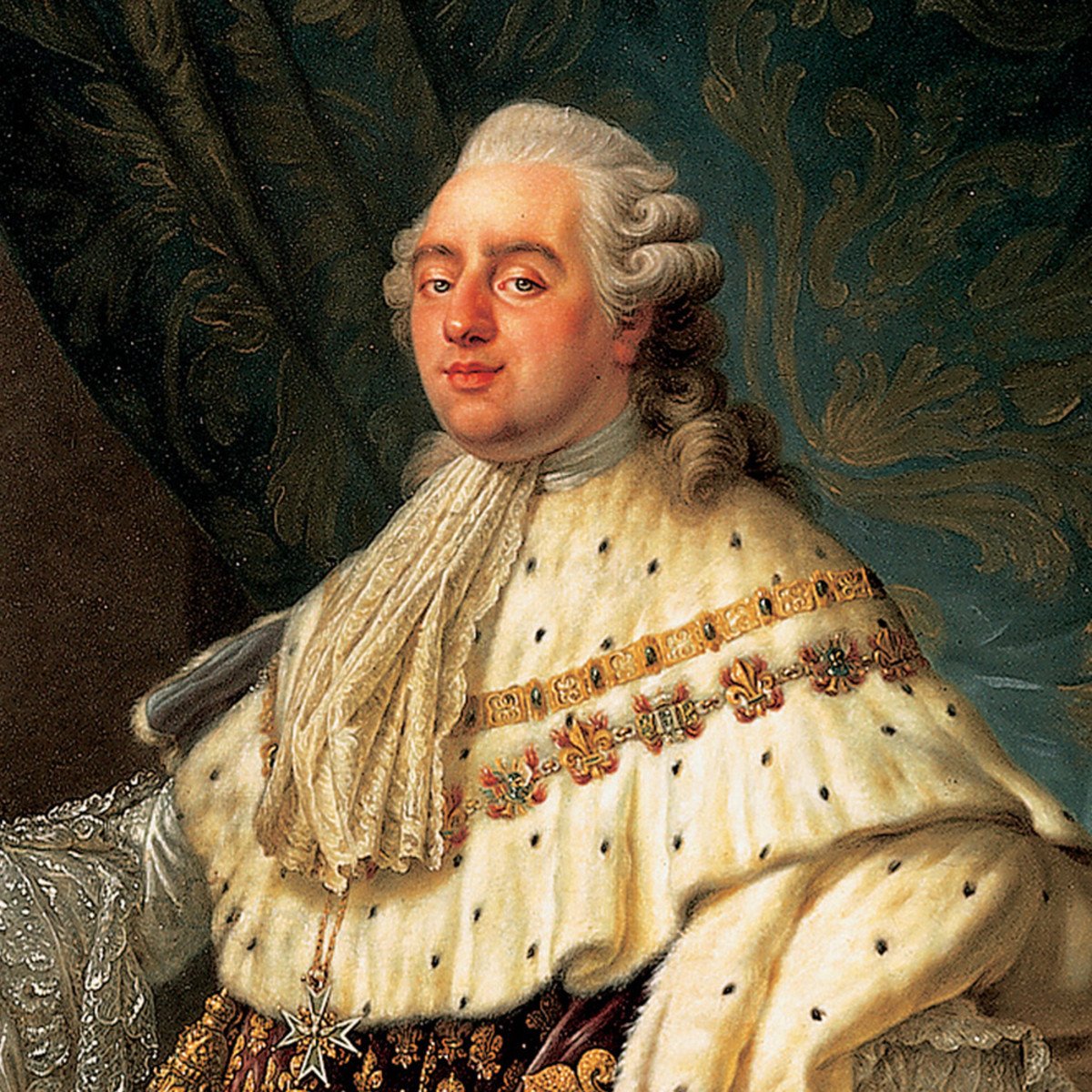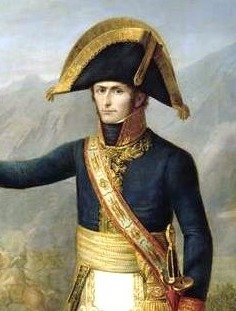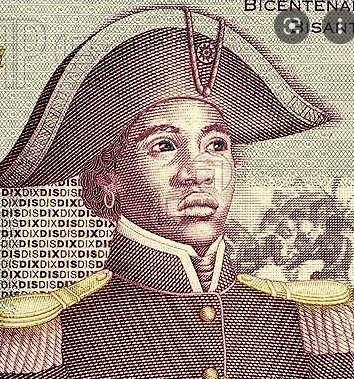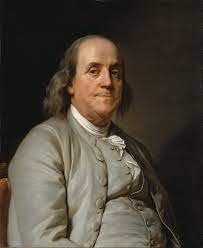Authors Notes
In order of appearance
Book 1 & Book 2
Listed by Name and who they are in the story with actual historical description under each
Henry Christophe - Principal character beginning when he was 12-years old and into adulthood.
Christophe (1767 – 1820) began his military career as a drummer boy in the famed Chasseurs-Volontaires de Saint-Domingue and reportedly worked at the Hotel la Couronne, albeit for an unknown period of time. As an adult, he became a key leader in the Haitian Revolution and ascended to be the only monarch of the Kingdom of Haiti. Christophe set out to improve all aspects of life in the Northern Province focusing on building defense mechanisms for his country and educating his people.
Jean Baptiste Charles Henri Hector, Comte d’Estaing - French nobleman who found Christophe and launched his military career.
d'Estaing (1729 –1794) was a French aristocratic general and admiral. Following France's entry into the American War of Independence in 1778, d'Estaing led a fleet to aid the American rebels and participated in the failed attempt to oust British troops from the city of Savannah, Georgia. He was executed by guillotine during the Reign of Terror. Before his execution, d’Estaing wrote, "After my head falls off, send it to the British as they will pay a good deal for it!"
Admiral John Byron - The book details engagements between Admiral Byron and Comte d’Estaing in the Caribbean.
Vice-Admiral John Byron (1723–1786) was a British Royal Naval officer and explorer. He earned the nickname "Foul-Weather Jack" in the press because of his frequent encounters with bad weather at sea.
He circumnavigated the world as a commodore in 1764–1766 and fought in battles in the Seven Years' War and the American Revolution. He rose to Vice Admiral of the White before his death in 1786.
Henri-Louis de Boulainvilliers de Croy - Captain of the flagship which d’Estaing commanded from.
De Croy (unknown birth/death) was a French Naval officer beginning in 1735. He attained the rank of Captain in 1757. He served in the War of American independence. He commanded the 80-gun Languedoc as flag captain to Estaing. He took part in the Battle of Rhode Island, the Battle of Grenada and in the Siege of Savannah in 1779.
Benjamin Franklin - Was very instrumental in obtaining aid from France as Ambassador from the American colonies.
Franklin (1706 – 1790) was an American polymath who was active as a writer, scientist, inventor, statesman, diplomat, printer, publisher, and political philosopher. He served as the United States Ambassador to France from 1776-1785 and was instrumental in securing aid of the French government for the American revolution.
Louis XVI, the King of France - Extreme financial conditions from wars and excess led to his demise as ruler.
Louis XVI (1754 – 1793) was the last King of France before the fall of the monarchy during the French Revolution. He was referred to as Citizen Louis Capet during the four months just before he was executed by guillotine.
General Marquis de Lafayette - France’s military envoy to the American colonies to assist in fighting the British army.
La Fayette (1757 – 1834) was known in the United States as Lafayette, a French aristocrat and military officer who fought in the American Revolutionary War, commanding American troops in several battles, including the siege of Yorktown.
General Benjamin Lincoln - Successful general who experienced a series of losses after suffering his own injuries.
Lincoln (1733 – 1810) was born to one of first dynastic American families and obtained much success during the revolutionary war until wounded and had to take a hiatus to tend to his recovery. When he returned in 1778, Washington placed Lincoln in charge of the Southern Department. In 1780, Lincoln was forced to surrender over 5,000 men to the British—the largest surrender of American troops during the war. Lincoln served from 1781 to 1783 as the first United States Secretary of War.
General Georges Biassou - A leader very early in the revolution, switched to Spain and retired in Florida.
Biassou (1741 – 1801) was an early leader of the 1791 slave uprising in Saint-Domingue. Although I place him as part of the Maréchaussée of St. Domingue, there is no evidence he served in that force.
He withdrew from Santo Domingo in 1795 to St. Augustine, Florida and at one time owned the historic Salcedo House. There he served as Spanish general, retired, and died at age 60 in 1801 during a drunken bar brawl. He was buried with honors by the Spanish military.
Daniel Montbars aka 'Montbars the Exterminator’ - Colorful pirate plying the waters of the Caribbean.
Montbars (1645–1707), better known as Montbars the Exterminator, was a 17th-century French buccaneer. For several years, he was known as one of the most violent buccaneer’s active against the Spanish during the mid-17th century.
Casimir Pulaski - Considered a brilliant cavalry leader who brought the cavalry to the American Revolutionary army.
Pulaski (1745 – 1779) was a Polish nobleman and military commander born in Warsaw, Poland. His family was an old and influential branch of the Polish aristocracy. In 1771 the Polish government implicated Pulaski in a plot to abduct Stanislaus II, the Russian-controlled king, and accused him of treason. Pulaski sought protection in France. He is credited with aiding the American Revolution and has been called, together with his counterpart Michael Kovats de Fabriczy, "the father of the American cavalry."
Hezekiah Frith - Pirate who plyed the waters of the Caribbean and based in Bermuda.
Frith (1763 – 1848) was an 18th-century British ship owner with the reputation of a "gentleman privateer", who engaged in piracy during the 1790s. One of the richest men in Bermuda during the late 18th and early 19th centuries, he built the Spithead House in Warwick, Bermuda
Jean-Baptiste Chavannes - Executed after being tried and convicted of a failed rebellion.
Chavannes (1748 – 1791) was an abolitionist from St. Domingue, and rebel soldier. He was the son of rich mulatto parents, and received a good education. He distinguished himself when fighting with the Chasseurs-Volontaires de Saint-Domingue at Savannah and later during military operations in Virginia and New York for American Independence. Chavannes returned to Saint-Domingue and joined Vincent Ogé in a failed insurrection, later to be publicly executed by dismemberment.
Vincent Ogé - Executed after being tried and convicted of a failed rebellion.
Ogé (1755 – 1791) was a Creole aristocrat from St. Domingue who instigated a rebellion against the Bourbon Regime in French Saint-Domingue that lasted from October to December 1790 in the area outside Cap-Français, the colony's main city. The failed insurrection cost him his life by execution by dismemberment along with his co-conspirator, Jean-Baptiste Chavannes.
Governor Philibert François Rouxel de Blanchelande - Governed the colony during the beginning of the slave uprisings.
de Blanchelande (1735 – 1793 guillotined in Paris) was a French general. He served as Governor of Saint-Domingue at the start of the Haitian Revolution.
Dutty Boukman - Voodoo priest who presided over the ceremony which launched the slaves to rebellion.
Boukman (1767 - 1791) was an early leader of the Haitian Revolution. According to accounts, Boukman, alongside Vodou mambo Cécile Fatiman, presided over the religious ceremony at Bois Caïman, in August 1791, that served as the catalyst to the 1791 slave revolt which is usually considered the beginning of the Haitian Revolution.
Boukman was a key leader of the slave revolt but was killed early on by the French planters and colonial troops just a few months after the beginning of the uprising. The French then publicly displayed Boukman's head in an attempt to dispel the aura of invincibility that Boukman had cultivated.
Cécile Fatiman - Powerful Mambo who, along with Boukman, launched a slave uprising.
Fatiman (1771-1883), was a Haitian voodoo priestess, a mambo. She is famous for her participation in the voodoo ceremony at Bois Caïman along with Dutty Boukman which is considered to be one of the starting points of the Haitian Revolution.
François-Dominique Toussaint Louverture - One of the primary leaders in the colony and later rebelled against Napoleon’s attempt to retake the colony.
Also known as Toussaint L'Ouverture or Toussaint Bréda; (1743 – 1803) was a Haitian general and the most prominent leader of the Haitian Revolution. During his life, Louverture first fought against the French, then for them, and then finally against France again for the cause of Haitian independence. As a revolutionary leader, Louverture displayed military and political acumen that helped transform the fledgling slave rebellion into a revolutionary movement. Louverture is now known as one of, if not the "Father of Haiti".
In 1802, Toussaint was captured and deported to France on the 74-gun French ship thCréole. He warned his captors that the rebels would not repeat his mistake, "In overthrowing me you have cut down in Saint Domingue only the trunk of the tree of liberty; it will spring up again from the roots, for they are numerous and they are deep."
During his imprisonment at the frigid Fort-de-Joux in Doubs, France, Louverture attempted to gain an audience with Napoleon, who refused. He wrote a memoir and died in prison on April 7, 1803 at the age of 60.
Suzanne Simone Baptiste Louverture
Suzanne Louverture (1742 – 1816) was the wife of Toussaint Louverture. When in 1801 the constitution appointed Toussaint as governor of Saint-Domingue, she received the title of "Dame-Consort."
In 1802, Charles Leclerc's troops captured her along with her husband and the rest of her immediate family and shipped them to France. Madame Louverture survived her husband, who died that same year. She was the mother of three boys, her youngest of which, Saint-Jean, died in 1804 in Agen, France. She died in 1816, in the arms of her sons, Placide and Isaac in Agen as well.
Moyse (Moïse, Moise) Louveture
Most commonly “Moise” (1773 - 1801) was a military leader and one of the most ardent leaders of the first uprising in 1791 and acted as the second-in-command to Toussaint. There is universal agreement that Toussaint L’Ouverture adopted Moise as his nephew.
Originally allied with Toussaint, Moise grew disillusioned with the minimal labor reform and land distribution for black former slaves under the L’Ouverture administration and lead a rebellion against Toussaint in 1801. Though executed on order of L’Ouverture, the insurrection he directed highlighted the failure of the Haitian Revolution in creating real revolutionary labor change and ignited the movement that eventually contributed to driving L’Ouverture from office.
Matías de Armona
de Armona (1731 – 1796) was a governor of Las Californias, serving from 1769 to 1770, during Spanish Empire colonial rule of New Spain. While in Santo Domingo, he negotiated the recruitment of the black slave army to fight under the Spanish Colonial army as the black auxiliaries.
Jean-Jacques Dessalines
Dessalines (1758-1806) was a leader of the Haitian Revolution and the first ruler of an independent Haiti under the 1805 constitution. Under Dessalines, Haiti became the first country to permanently abolish slavery. Initially regarded as governor-general, Dessalines was later named Emperor of Haiti as Jacques I (1804–1806) by generals of the Haitian Revolution Army and ruled in that capacity until being assassinated in 1806. He has been referred to as the father or one of the founding fathers of the nation of Haiti.
General Charles Belair
Belair (1760–1802) was Aide-de-Camp and lieutenant of Toussaint Louverture, Head of the 7th demi-brigade, Commandant of l'Arcahaye and Former lieutenant of Biassou. He was also a nephew of Toussaint Louverture. In 1796, he married Sanite Belair, female hero of the revolution.
Sanite ‘Suzanne’ Bélair
Sanite Bélair, (1781 –1802) was a Haitian revolutionary and lieutenant in the army of Toussaint Louverture. Born an affranchi in Verrettes, Haiti, she married Brigade commander and later General Charles Bélair in 1796. She was an active participant in the Haitian Revolution, became a sergeant and later a lieutenant during the conflict with French troops of the Saint-Domingue expedition. Her portrait appears on the Haitian 10 gourdes banknote.
Marie Louise Coidavid
Coidavid (1778 - 1851), was the Queen of the Kingdom of Haiti from 1811–1820 as the spouse of Henry Christophe. She was born into a free black family; her father was the owner of Hotel de la Couronne in Cap Francais, St. Domingue. Henri Christophe was a slave purchased by her father and he supposedly earned enough money in tips from his duties at the hotel that he was able to purchase his freedom before the Haitian Revolution.
They married in Cap-Francais in 1793, having had a relationship with him from the year prior. They had four children: François Ferdinand, Françoise-Améthyste, Athénaïs and Victor-Henri. She was exiled for 30 years. Shortly before her death, she wrote to Haiti for permission to return, however died in Italy.
François-Thomas Galbaud du Fort
du Fort (1743 – 1801) was a French general who was briefly governor-general of Saint-Domingue and exiled by the authorities from there. When Galbaud reached Paris in the spring of 1794 he was at once arrested and thrown into Abbaye prison. In 1799 he was released and rejoined the army, assigned to Egypt, with the rank of brigadier-general but died of the plague in 1801 in Cairo.
Benoit Joseph André Rigaud
Rigaud (1761 – 1811) was the leading mulatto military leader during the Haitian Revolution and the civil war in the colony. Among his protégés were Alexandre Pétion and Jean-Pierre Boyer, both future presidents of Haïti. Rigaud was a racists who hated the black population of the island. He returned to Saint-Domingue in 1802 with the expedition of General Charles Leclerc to unseat Toussaint and re-establish French colonial rule and slavery in Saint-Domingue
Alexandre Pétion
Pétion (1770 – 1818) was the first President of the Republic of Haiti from 1807 until his death in 1818. He is acknowledged as one of Haiti's founding fathers; a member of the revolutionary quartet that also includes Toussaint Louverture, Jean-Jacques Dessalines, and his later rival Henri Christophe.
Pétion distinguished himself as an esteemed military commander with experience leading both French and Haitian troops. The 1802 coalition formed by he and Dessalines against French forces led by Charles Leclerc would prove to be a watershed moment in the decade-long conflict, eventually culminating in the decisive Haitian victory at the Battle of Vertières in 1803.
Charles Victoire Emmanuel Leclerc
Leclerc (1772 – 1802) was a French Army general who served under Napoleon Bonaparte during the French Revolution. He was husband to Pauline Bonaparte, sister to Napoleon. In 1801, he was sent to Saint-Domingue (Haiti), where an expeditionary force under his command captured and deported the Haitian leader Toussaint L'Ouverture, as part of an unsuccessful attempt to reassert imperial control over Saint-Domingue. Leclerc died of yellow fever during the failed expedition.
Napoleon Bonaparte
Napoleon (1769 – 1821) and later known by his regal name Napoleon I, was a French military and political leader who rose to prominence during the French Revolution and led several successful campaigns during the Revolutionary Wars. He unsuccessfully attempted to re-enslave the most valuable of the French possessions, St. Domingue, from 1801 to 1803.
Colonel Charles Humbert Marie Vincent
Vincent (1753 – 1831) entered the French military service in 1773. In 1801, he delivered the new constitution established by Toussaint Louverture to First Consul, Napoleon Bonaparte in France. Vincent warned against making the doomed Saint-Domingue expedition, but his advice was not heeded. First Consul, Napoleon Bonaparte, exiled him to the island of Elba. After his exile in 1803, Vincent went on to serve a brilliant military career until his retirement in 1815 at age 62.
Pauline Bonaparte
Bonaparte (1780–1825), the youngest of Napoleon’s three sisters, was the most frivolous one. She possessed magnetic beauty and charm. Wherever she went, the eyes of men turned after her. Men loved her and she loved them.
Pauline was a nymphomaniac and much to Napoleon’s chagrin, she made it very public.
Suzanne (Sanite) Bélair
Bélair (1781 – 1802) was a Haitian revolutionary and lieutenant in the army of Toussaint Louverture. Born slave and became affranchi in Verrettes, Haiti. She married Brigade commander and later General Charles Bélair in 1796. She was an active participant in the Haitian Revolution, became a sergeant and later a lieutenant during the conflict with French troops of the Saint-Domingue expedition. She is pictured on the Haitian 10 gourdes banknote.
Marie-Jeanne Lamartinière
"Marie-Jeanne" (unk - 1802), was a Haitian soldier and reportedly a "dazzling beauty." She served in the Haitian army during the Haitian Revolution and in at the Battle of Crête-à-Pierrot (March 1802) with her husband Louis Daure Lamartinière. She fought in a male uniform standing along the fort's ramparts bearing both a rifle and a sword.
Catherine Flon
Flon (unk. birth-death) was a Haitian seamstress, patriot and national heroine. She is regarded as one of the symbols of the Haitian Revolution and independence. She is celebrated for sewing the first Haitian flag in May,1803 and maintains an important place in Haitian memory of the Revolution to this day.
Marie Sainte Dédée Bazile
Bazile (unk. birth-death), known as Défilée and Défilée-La-Folle, is a figure of the Haitian Revolution. Dédée Bazile was born near Cap-Français to enslaved parents and made a living serving as a sutler to the army of Dessalines. She is remembered for retrieving and burying the mutilated body of Emperor Dessalines after his assassination at Pont Larnage.
Empress Marie-Claire Heureuse Félicité Bonheur
Félicité (1758 - 1858) became Empress of Haiti (1804–1806) as the spouse of Jean-Jacques Dessalines and had seven children together. During the siege of Jacmel in 1800, she was applauded for her work with the wounded and starving. She managed to convince Dessalines, besieging the city, to allow roads to be opened for food, clothes and medicine which she personally delivered.
Henry (Henri) Christophe
Jean-Baptiste Charles Henri
Hector, Comte d’Estaing
Louis XVI, the King of France
General Georges Biassou
Casimir Pulaski
Jean-Baptiste Chavannes
Toussaint (Breda) Louverture
Dutty Boukman
Governor Philibert François Rouxel
de Blanchelande
Suzanne Simone Louverture
Charles Victoire Emmanuel Leclerc
Charles Victoire Emmanuel Leclerc
Alexandre Pétion
Jean-Jacques Dessalines
Sanite ‘Suzanne’ Bélair
Catherine Flon
Benjamin Franklin
















